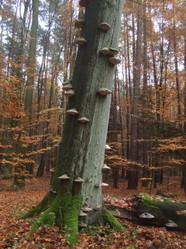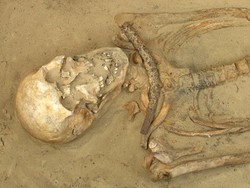In 1924 Charles Harper investigated and found that there was no Croglin Grange,though Croglin Low Hall existed, and the description of the hall given by Hare did not match reality. The Cranswells were not traceable. Furthermore, there was no church nearby. He concluded that the story was pure fiction. [A low is a small hill.]
However in 1936 Clive Ross investigated and found a woman who had known a descendant of the Fisher family, who had owned the hall and had been told the story by this descendant. She, however, said that she had heard the legend from her grandfather, who was born in 1860, but who had heard it from his grandparents. This indicates that the story is older than the 1870s when Hare set it. Furthermore, there had been a chapel in the grounds of Croglin Hall, but while it had been demolished, the foundation stones were still visible. Moreover, a study of the hall's deeds reveal that it was once known as Croglin Grange. A grange was the name given to outlying sheep farms belonging to Cistercian abbeys, so it was likely that in a post-reformation Protestant society Catholic place names might be unpopular and would be changed by some people. This name change took place in 1724.But despite legal changes of name old names can linger on in common usage.
The Cistercian monks would not have had a woman staying in their Granges, so if there is any truth in the tale the events happened between the time when the Cistercians were forced to hand over their property, which was in the 1530s, and the late seventeenth century.
It seems that Augustus Hare took an older tale originating in the sixteen hundreds and retold it for his own time. The parallels with Dracula were his own augmentation of the tale, and this is normal, for tales can be elaborated by the tellers.
So did it happen? We cannot tell, but we don't need to postulate anything supernatural, graveyards and vampire legends not withstanding. It appears to me that we are dealing with a record of a sex attack on a young woman that was fortunately prevented. As for the shrivelled body in the tomb, there is nothing vampirish about this. A thigh wound is often fatal as it can sever a major artery. We can postulate that the wounded assailant stumbled into a graveyard and took refuge in a tomb, where he lay slowly bleeding to death. By the time that the body was found it had been drained of all of its blood, leaving a shrivelled corpse.
The tale will continue to be recounted, but we need not treat it as an account of a supernatural event. Strange events not conventionally explicable do happen, but this is not one of them.







 Pilgrimage. A reviewon 06/15/2025
Pilgrimage. A reviewon 06/15/2025
 Leo the Fourteenthon 05/09/2025
Leo the Fourteenthon 05/09/2025
 The Melsonby Hoardon 03/25/2025
The Melsonby Hoardon 03/25/2025



Comments
More conventional graves dug into the soil.
Thank you for your answer Nov.14, 2018, to my previous question Nov. 13, 2018!
Your answer associated box tombs more with northern England -- especially northwestern areas -- than with southern areas.
What tombs predominated outside such box-tomb areas as North Lancashire and Cumbria, just south of Scotland?
Your comment back on Nov. 2, 2018, associates few vampire legends with England.
Does the same hold for Cornwall, Ireland, Scotland and Wales?
Vampires, in my view, don't exist. It is perverted humans who bite necks, which is why I think that this was a human attack. As for ghosts! They occur/exist, whatever word you choose to use, but when I meet one that can hit as hard as a heavyweight boxer I will get worried. There is no need to be afraid of them.
Although I am afraid of ghosts and vampires, I really enjoyed the story. I wonder why did the creature chose Amelia every time. Perhaps the Dead prefer some people from others, the delicate or fragile ones. The scientific deduction in the end sounded convincing, maybe people distort the facts and make it sound scary in order to make it captivating.
The tombs are more common in the North of England, particularly the North West areas of North Lancashire and Cumbria, just south of Scotland.. The tombs are made of stone slabs, generally of local sandstone. They were not the graves of the poor, who had to be content with a shallow grave in the the thin soil.
frankbeswick, Thank you for the product line and the scary tale. I avoid scary stories even though the fear was lessened in this case because of the presentation.
Are box tombs common elsewhere in the Isles? What material are they made of? It sounds like they could be quite challenged by churchyard equipment and severe weather.
Indeed all the more allure
Vampire legends are few and far between in England.
I confess to a fascination with vampires, werewolves and witches, the stories are riveting. I indulgent in such, the ancient beliefs, documentation and events surrounding these tails, legends and recollections never fall on death ears with me.